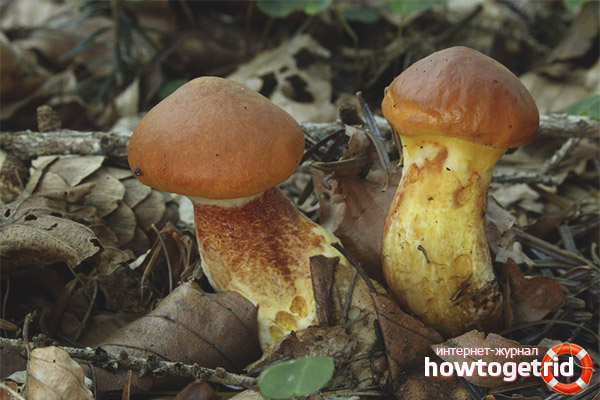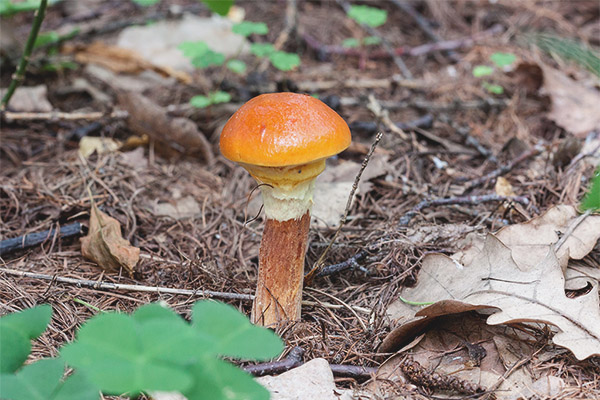The content of the article
Maslata are among the most common mushrooms in Russian forests. Whichever forest (larch, coniferous or mixed) the mushroom picker does not go, he will surely see a hat of some of the many kinds of oil that looks out from behind a tree. For example, in the thickets of larch or cedar there are very many chances to see a fiery-bright hat of a larch buttery.
Description
Larch butterdish (another name - elegant butterdish) - one of the many mushrooms of the oilseed family. It grows mostly close to larch (although it is sometimes found in places where this tree is absent), the cap is painted in bright yellow, brownish-yellow or orange shades (depends on the subspecies). They are two, but, except for the color of the cap, they do not have differences.
Diameter 3-15 centimeters, conical shape or in the form of a hemisphere, in adult specimens almost flat with upward curvedby the edges. The color is lemon yellow, orange yellow or golden brown.
The skin is smooth, adhesive, removed with some difficulty. Be sure to shine when the weather is dry.
The pulp of the fungus is yellowish, under the skin turns brown in the air. In young specimens, it does not change color on a fracture, in mature specimens it becomes pinkish and acquires a brown color. The fungus has a tubular layer, the tubes are covered with a yellow veil, then it disappears and the fungus has a yellowish ring that surrounds the leg.
Leg from 5 to 11 centimeters, with a diameter of 1-3 centimeters. It can be cylindrical, curved or in the form of a mace. There is a sharp difference in the colors above and below the ring: in the upper part it is lemon-colored, in the lower part it is red-brown.
The pores are round yellow in color, and if pressed on them, they acquire a brownish tint. The color of the spore is olive or ocher.
Where grow up
They often bear fruit in small groups, but can grow alone, from late June to mid-September when frosts come. Tied to a tree, forming a mycorrhiza with it, they can grow under it for a long time and successfully until it dies - with the death of the tree, the mycelium also disappears.
Edibility
Possessing a pleasant taste and a light fruity smell, larch butterdish will decorate a dish of any connoisseur of mushrooms. The elegant butter dish belongs to the 2nd edible category, it is stewed, fried, pickled, salted, soups are made, sauces are prepared and salads are made.
The main thing is to collect mainly young fungi, because the larch butterdish, like all boletus, is very quickly attacked by insects and larvae and often turns out to be wormy.
Medical properties

This type of fungus contains polysaccharides with proven anti-cancer action by world medicine - they successfully inhibit the growth of malignant cells in the digestive system and larynx.
In the domestic public health, this fungus is used to treat pain in the head, the composition contains a resinous component that helps eliminate uric acid from the body’s tissues, with the help of which gout is successfully treated. It is also used for the treatment of foot pains, with numbness of the arms and legs. Broths of larch oil can help to relax muscles and muscles.
It is also used as a prophylaxis for heart diseases (heart attacks) and strokes.
Benefit
The use of young oil in dishes (the skin is not removed) helps to stimulate the immune defense of the human body. Tinctures on alcohol from young mushrooms are used to make bones stronger and stronger.
By the way, to quickly and without problems remove the skin from the cap, you need to put mushrooms for thirty minutes under the sun's rays - the mucus on the skin will dry up, and cleaning will become more convenient.
Harm
Harm from oil a little. First of all, it is long and hard for the body to digest, so for people with liver and gastrointestinal diseases, use should be limited.
And, of course, it is not necessary to collect where there are a lot of cars and working enterprises - all toxins will be in mushrooms.











To send